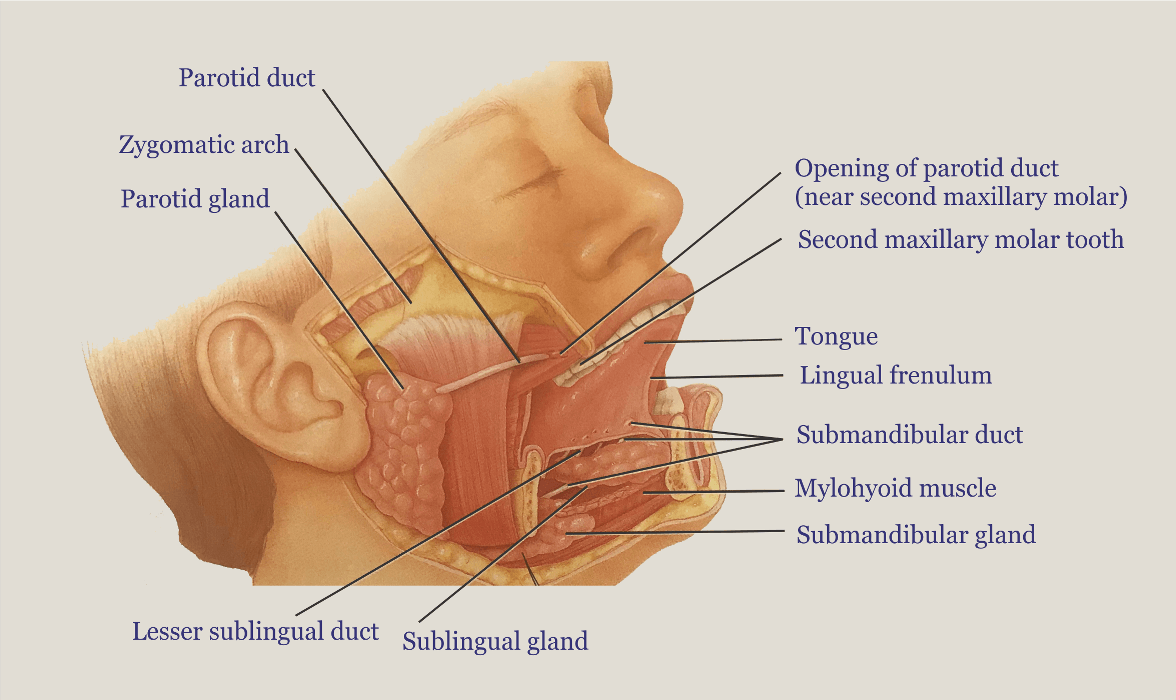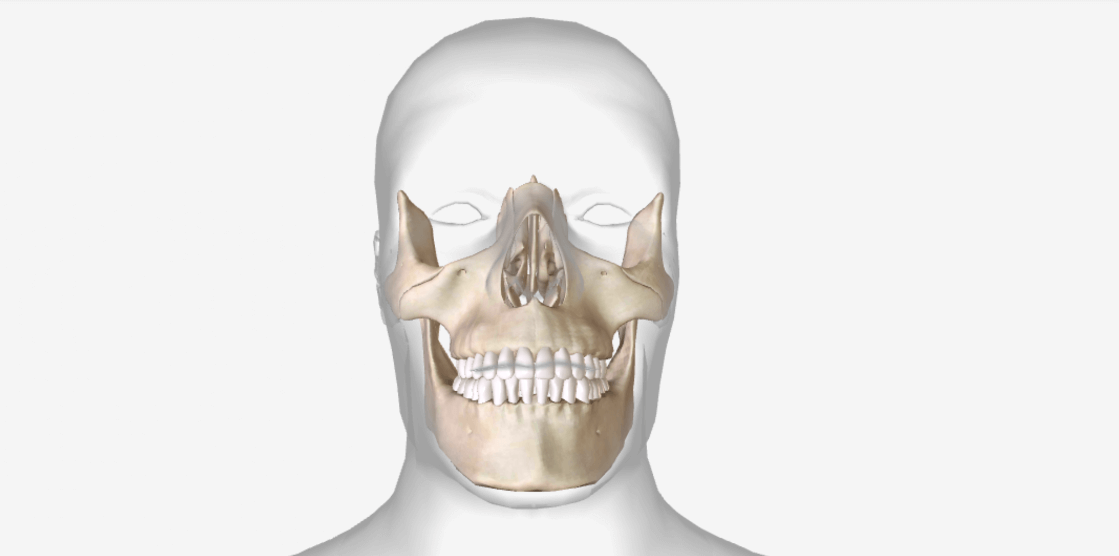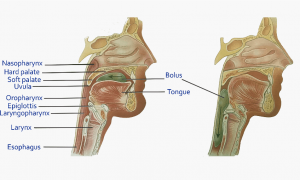Salivary Glands

A salivary gland releases a secretion called saliva into the oral cavity. Saliva is secreted to keep the mucous membranes of the mouth and pharynx moist and to cleanse the mouth and teeth.
When food enters the mouth secretion of saliva increases it lubricates, dissolves, and chemically break the food. The mucous membrane of the mouth and tongue contains many small salivary glands that open into the oral cavity.
These glands are labial, buccal and palatal glands in the lips, cheeks, and palate and lingual glands in the tongue.
- Most saliva is secreted by the Major salivary glands, through duct they open into the oral cavity. There are three pairs of major salivary glands:- the parotid, submandibular, and sublingual glands.
- The Parotid glands are located inferior and anterior to the ears. Each secretes saliva through a parotid duct that opens opposite the second maxillary (upper) molar tooth.
- The Submandibular glands are found in the floor of the mouth. Their ducts, the submandibular ducts enter the oral cavity proper lateral to the lingual frenulum.
- The Sublingual glands are present below the tongue and superior to the submandibular glands. Their ducts lesser sublingual ducts, open into the floor of the mouth.
Composition-
-The secretion of saliva, called salivation is controlled by the autonomic nervous system. The amount of saliva secreted daily is average about 1000–1500 mL.
-Saliva is 99.5% water and 0.5% solutes are ions-sodium, potassium, chloride, bicarbonate, and phosphate, organic substances-urea and uric acid, mucus, immunoglobulin A, enzyme lysozyme, and salivary amylase enzyme that acts on starch.
Function–
- The saliva provides a medium for dissolving foods so they can be tasted by gustatory receptors.
- Chloride ions activate salivary amylase enzyme that starts the breakdown of starch in the mouth.
- The salivary gland removes waste molecules from the body.
- Mucus lubricates food so it can be moved easily in the mouth and swallowed.
- Immunoglobulin A (IgA) prevents the microbes to enter into the epithelium and the enzyme lysozyme kills bacteria.




